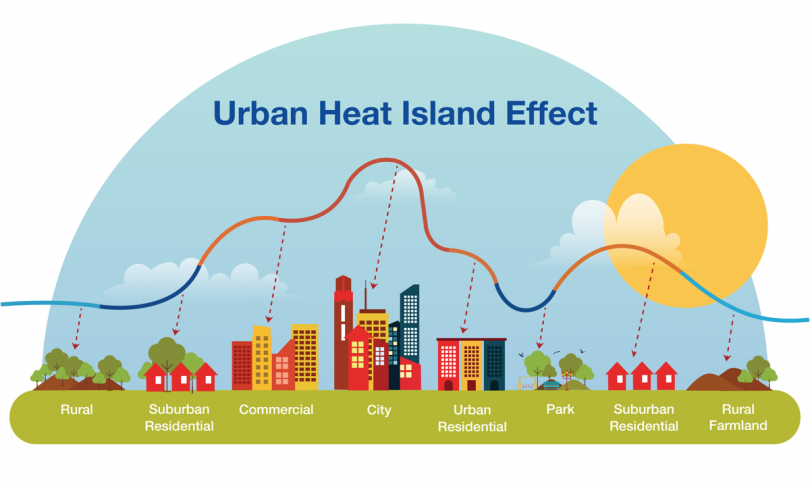Urban Heat Island Effect is becoming a serious global problem. This has been causing adverse effects not only on cities, but also on people. Tackling this problem is becoming more necessary than ever, as not doing so leads to a number of problems.
This article will uncover the concept of this effect as well as its causes. Also, we will be discussing how cities are adapting to this in their own creative ways.
Understanding the Concept of Urban Heat Island Effect
This effect refers to urban areas getting warmer than the surrounding rural areas, especially at night. The cause of the increase in temperature is because of:
- Heat emissions ratio of a city
- Elevated solar radiation
- Human activity
- Infrastructure
Explaining it in much simpler words, Heat produced by the sun is stored during the day. This heat is then released very slowly during the night, thus limiting the cooling effect of air at night.
Heat Causes Responsible for the Urban Heat Island Effect
The causes that give rise to heat that contribute towards the Urban Island Effect are as follows:
Reduced Greenery
Excessive urbanization can significantly reduce the trees, lawns, and other vegetation to a great extent. This results in less shading, and the process for naturally cooling the air remains completely insufficient.
Materials Used for Infrastructure
Materials that are being used for buildings, roads, and other infrastructure are a major contribution to intensifying this effect.
For instance, if concrete or asphalt is used abundantly, then these materials are extremely heat-absorbent. Thus, increasing the impact of this effect.
Urban Layout
If a city has narrow streets and skyscrapers, then this can diminish the circulation of air, thus amplifying the heating effect.
Heat Omitting Activities
There are a plethora of activities that significantly generate heat. It includes cars, mechanical systems, and other industrial activities. The amount of heat from these activities accumulates and acts as a barrier for the cool air.
Challenges That Come With Excessive Urban Heat
The following are the challenges that come with this effect:
- It gives rise to health problems in children and the elderly
- A temperature rise can cause damage to infrastructure. An example of this is the recent wildfires in the United States
- Also, this heat reduces the overall industrial productivity. Because working outdoors in this heat can become a health hazard
How U.H.I Effect Can Be Intercepted?
These can be done in the following ways:
Implementing Strategies for Heat Mitigation
The strategies are structured in such a way that they are reforming how buildings are designed with sustainable practices. A few examples are as follows:
Green and Cool Roofs
- As the name suggests, green roofs are those that are covered with plants. On the other hand, cool roofs are those that are covered with light reflection coatings.
- In New York, United States, more than 8 million square feet of green and cool roofs have been installed since 2011
Cooler Pavements instead of Regular
Cooler pavements significantly reduce the heat effect by several degrees. Cooler pavements offer more heat reflection as well as water absorption.
Strategic Heat Management
Heat can be mitigated to a certain extent, but not more than that. That is when heat management strategies come into play. These strategies are as follows:
Smart Indoor Cooling
Many households in the United States are getting professional HVAC Estimating services either to install or replace a modern heating and cooling system.
Establishing Cooling Centres
These centres are public facilities that provide various amenities for people. In Chicago, United States, over 128 cooling centers have been established, which can accommodate up to 5000 people.
Lower Energy Consumption
There are electrical systems that use a lower amount of energy and yield the same output. In the United States, there is an overall shift of 37% towards these systems. These systems operate at a lower voltage, thus saving energy to a great degree. This has significantly increased the demand for Electrical Estimating Services, and the most ideal choice for this kind of estimation is SMA MEP Estimate.
End Note
Urban Heat Island Effect is becoming a serious problem that is affecting multiple things at once. As mentioned in this article, the two main drivers of this effect are climate change and urbanization. But, not to worry, as there are many tested solutions present that can be applied to handle this problem. By reading and adopting this article, you will gain knowledge about all of these solutions.



